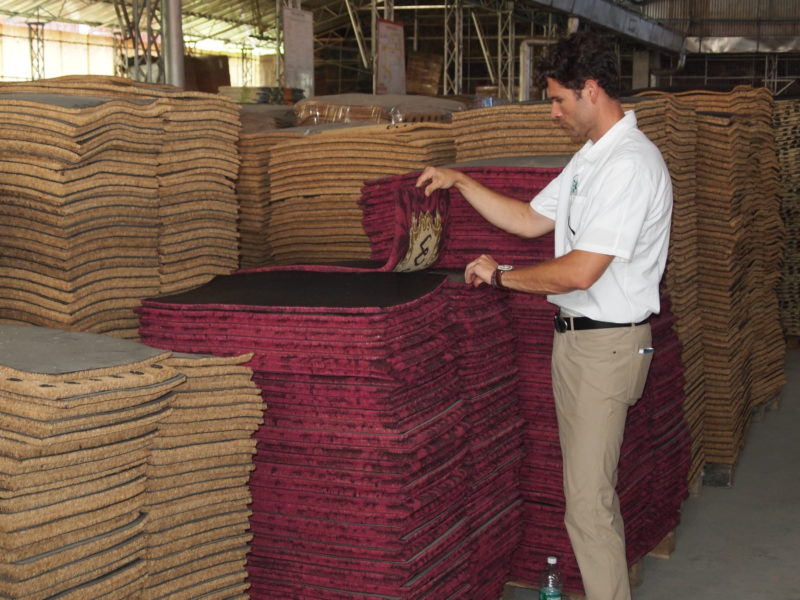
While still relatively new to the carpet scene, coir is becoming increasingly popular. With customers looking for more sustainable and renewable products, many manufacturers are using coir more frequently. Coir comes from the husks of coconuts and is produced by hand. The fibers are soaked in water until they are soft enough to weave into carpets and mats. These strong fibers are all-natural and offer a variety of advantages over other carpet materials.
Durable, Inexpensive, and Low Maintenance
Coir fibers are very strong and, when woven together, create a durable rug suitable for high traffic areas. It is the coarse fibers that make coir rugs so durable, but that also means they are not as comfortable for sitting on or barefoot traffic. For that reason, coir rugs are not recommended for use in bedrooms, but rather in areas that see more shoe traffic.
Doormats made from coir offer strong bristle-like fibers, making dirt and mud removal from shoes simple and easy. Because coir is a renewable resource, coir rugs are often less expensive than similar rugs made from other material. Because of their durability, coir rugs offer a long life with little maintenance. Coir rugs are easy to care for and require only occasional vacuuming to maintain their natural beauty.
Water and Insect Repellent
While many may assume that a rug made from natural resources could attract bugs, the opposite is true with coir. The natural coconut oils found in these fibers work as an insect repellent and are also water resistant.
Renewable, Biodegradable, and Produced by Hand
Coir can be harvested from coconuts at any stage of development. Coconuts are the seeds of the palm tree, which typically flower once a year. Coir can be made from coconuts that are picked and harvested, usually by monkeys, or those that have naturally fallen from the trees. Brown coir comes from the fibers of mature coconuts, while white coir comes from immature coconuts.
Coir harvesting and production are still mostly done by hand in Kerala, India, and Sri Lanka and requires very little energy to process the fibers. Coir is usually processed by hand, so traditional manufacturing processes are eliminated, making the refinement process much more environmentally friendly. Making coir does not require fossil fuels, unlike many synthetic fibers typically used to make rugs. Coir is also biodegradable, so it will not live for eternity in landfills when discarded.
Mildew Resistant and Hypoallergenic
Unlike many other natural fibers, coir is naturally resistant to mildew, making it an ideal carpet material for damp climates. Coir fibers are also naturally hypoallergenic.
The Natural Look
Many customers are now opting for a more natural looking decor, and a coir rug is the perfect addition to any rustic setting. Rugs made of coir come in a variety of different weaves and textures. Coir fibers can be bleached and dyed to offer many different color options as well.
If you are looking for an environmentally friendly and durable rug to add to your decor, a coir rug should definitely be your first choice.

Leave a Reply
You must be logged in to post a comment.